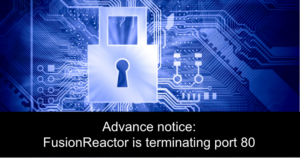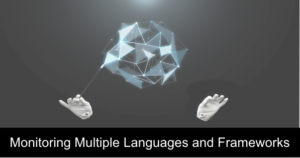Monitoring’s cardinality challenge
Why the challenge of monitoring that data becomes increasingly complex
In the world of technology, monitoring is essential for ensuring that systems and applications are running smoothly and efficiently. Monitoring tools collect and analyze data from various sources to provide insights into system health and performance. However, as the amount of data generated by modern technology systems continues to grow, the challenge of monitoring that data becomes increasingly complex.
One specific challenge that monitoring tools face is high cardinality data. In the context of monitoring, cardinality refers to the number of distinct values that a metric can take. For example, the metric “HTTP status codes” can have a high cardinality, as there are many different status codes that a web server can return. High cardinality data can put a strain on monitoring tools, as they need to store and process a large number of distinct values.
Despite this challenge, monitoring remains critical in today’s technology landscape. With the increasing complexity of systems and the high stakes of downtime, monitoring tools are essential for ensuring that businesses can quickly identify and address issues before they impact users. However, to effectively monitor systems, addressing the challenges posed by high cardinality data is essential. In the following sections, we will explore these challenges in more detail and discuss strategies for addressing them.
What is cardinality?
Cardinality is a fundamental concept in data analysis and refers to the number of distinct values in a data set. Cardinality represents the number of distinct values a particular metric can take on in the monitoring context. For example, if we monitor website traffic, the metric “referrer URLs” would have high cardinality, as many different referrer URLs could send traffic to the site.
High cardinality data can pose significant challenges for monitoring tools and systems. For example, collecting and storing high-cardinality data can quickly consume large storage space and processing resources. Additionally, high cardinality data can make it more difficult to identify trends and anomalies, as many distinct values exist to analyze.
To illustrate the impact of high cardinality data on monitoring, consider the following example. Suppose we monitor a distributed system with thousands of servers, each reporting metrics every minute. The amount of generated data can quickly become unmanageable if we collect metrics with high cardinalities, such as IP addresses or user agents. Furthermore, querying and analyzing this data can require significant computing resources, slowing down the monitoring system and impacting its effectiveness.
In summary, understanding cardinality is essential for effective monitoring. High cardinality data can pose significant challenges for monitoring tools and systems, including increased storage and processing requirements and decreased analysis efficiency. The next section will explore some strategies for addressing these challenges.
Cardinality challenges in monitoring
While high cardinality data is an essential monitoring component, it also presents several challenges. One of the primary challenges is the difficulty in storing and processing large amounts of high-cardinality data. Monitoring tools must be able to handle large volumes of data, and as the cardinality of that data increases, so do the storage and processing requirements. This can lead to scalability issues as the monitoring system grows and increase storage and computing resources costs.
Another challenge high cardinality data presents are the impact on resource consumption and costs. Collecting and analyzing high-cardinality data requires significant computing resources, which can be expensive. In addition, as the amount of data being collected and analyzed grows, so does the cost associated with storing and processing that data.
Strategies for addressing the cardinality challenge
To address the challenges posed by high cardinality data in monitoring, several strategies can be employed:
- Sampling techniques: Sampling involves collecting and analyzing only a subset of the data rather than the entire data set. By using sampling techniques, it is possible to reduce the amount of data collected and analyzed, which can help to reduce the storage and processing requirements associated with high cardinality data.
- Filtering and aggregation techniques: Another approach is to filter and aggregate the data, reducing the cardinality of the data set. This can involve grouping data into categories or ranges, which can help to simplify the data and reduce the number of distinct values. Aggregating data can also help to reduce the amount of data being stored and processed, which can help to reduce costs.
- Specialized monitoring tools: Finally, specialized monitoring tools can handle high cardinality data. These tools are designed specifically to handle large volumes of data with high cardinality and often provide more efficient and effective storage, processing, and analysis capabilities.
The challenges posed by high cardinality data in monitoring can be significant, but strategies are available to address these challenges. Sampling techniques, filtering and aggregation, and specialized monitoring tools allow it to effectively monitor systems with high cardinality data while minimizing the impact on resources and costs.
Best practices for monitoring high cardinality data
To effectively monitor high cardinality data, it is important to follow best practices that consider the challenges posed by this type of data. Here are some key best practices to consider:
Choosing the right monitoring tool: Not all monitoring tools are equal when handling high cardinality data. When selecting a monitoring tool, it is important to consider its capabilities for storing, processing, and analyzing high-cardinality data.
Defining a monitoring strategy: It is important to define a monitoring strategy considering cardinality. This includes identifying the most critical metrics to monitor and determining the appropriate sampling, filtering, and aggregation level.
Identifying and monitoring critical metrics: Not all metrics are equally important when monitoring high cardinality data. It is important to identify the most critical metrics and prioritize monitoring them. This can help to ensure that the monitoring system is focused on the most critical areas and is not overwhelmed by irrelevant or low-priority data.
By following these best practices, it is possible to effectively monitor high cardinality data and avoid many of the challenges associated with this type of data.
How can FusionReactor help?
The FusionReactor Observability platform helps with cardinality by providing comprehensive visibility and analysis of applications written in multiple technologies and frameworks. It enables you to effectively manage and understand the diverse and complex relationships between various data points, including high cardinality data. By leveraging advanced analytics and visualization tools, FusionReactor allows you to efficiently identify and analyze patterns, correlations, and anomalies within your application’s data, leading to improved troubleshooting and performance optimization.
Conclusion – Monitoring’s cardinality challenge
In conclusion, the cardinality challenge is a significant issue regarding monitoring data. High cardinality data can present storage, processing, scalability, and cost challenges. However, understanding the nature of cardinality and following best practices for monitoring high cardinality data can overcome these challenges and effectively monitor complex systems.
As technology continues to evolve and generate ever-increasing amounts of data, it is more important than ever to develop effective monitoring strategies considering the challenges posed by high-cardinality data. By doing so, we can ensure that our monitoring systems can provide the insights and alerts necessary to keep our systems running smoothly and effectively.



